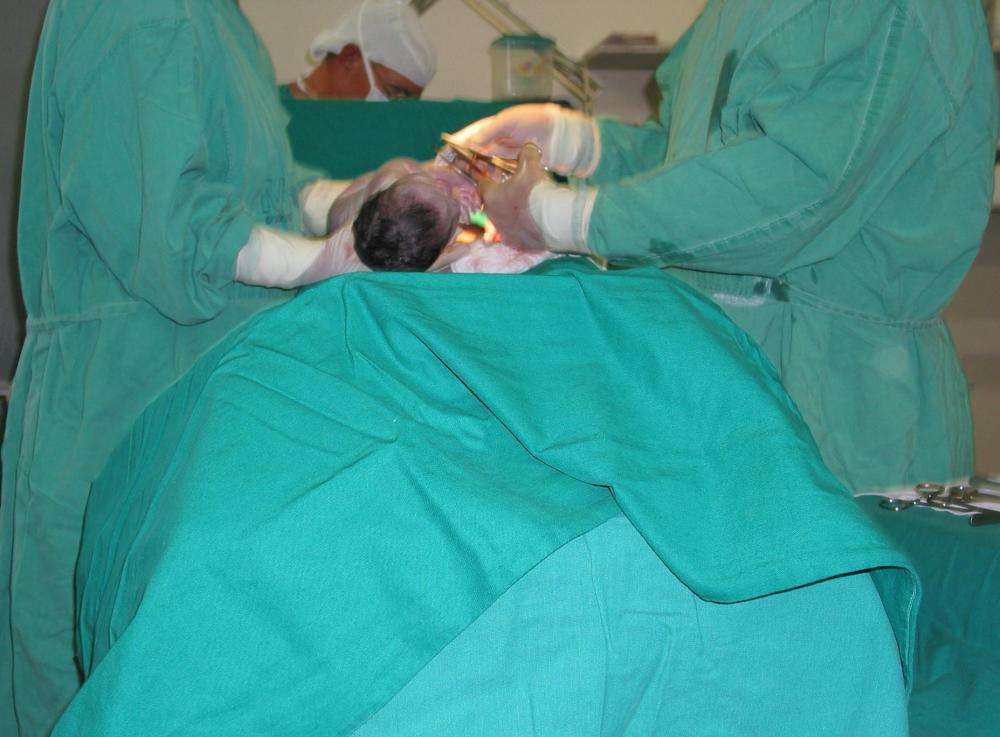At WiseGEEK, we're committed to delivering accurate, trustworthy information. Our expert-authored content is rigorously fact-checked and sourced from credible authorities. Discover how we uphold the highest standards in providing you with reliable knowledge.
What is Different About Pregnancy After a C-Section?
Pregnancy after a c-section is not normally different from pregnancy after a vaginal birth. In the majority of women, the pregnancy will progress normally with no problems related to having a prior c-section. The only possible area of concern is when women get pregnant too soon after having a c-section. The scar left by a c-section typically takes about three months to heal, and for some women it can be an entire year after her c-section before the scar tissue in her uterus becomes strong and firm. The weak scar tissue might increase the chances of the placenta separating prematurely from the uterine wall during pregnancy after a c-section, as well as uterine rupture during delivery.
Pregnancy after a c-section, regardless of how long ago the c-section took place, carries with it a slight risk of uterine rupture during labor and delivery. Many women opt to have second c-sections rather than trying to deliver their babies vaginally to minimize this risk. Uterine rupture rarely occurs, and when it does, it is almost always when women decide to deliver their babies vaginally after having a c-section the first time they were pregnant. C-sections typically take longer to recover from than vaginal deliveries, and some women decide to take their chances and deliver their babies vaginally in spite of the risks, possibly because of the reduced recovery period.

Vaginal birth after a c-section, also known as a VBAC, can be dangerous for both the mother and the baby if the uterus ruptures. Approximately one in 20 infants die if the uterus ruptures when a VBAC is attempted. Even though uterine rupture is extremely rare, many hospitals still discourage VBACs in women because of the potential risks and attempt to convince them to have repeat c-sections. There are many women who, upon being informed of the risks, determine that a repeat c-section would be the best option. Other women decide that the risks are so minimal that it would be worth attempting a simpler, vaginal delivery.

A woman who wants to minimize her risks of both placental separation and uterine rupture during a pregnancy after a c-section should probably wait at least one year before becoming pregnant again. Uterine rupture is much more likely to occur in women who become pregnant too quickly after having a c-section, as is placental separation. Apart from these two risks, post c-section pregnancies tend to progress just as normally as previous pregnancies that did not require c-sections.
AS FEATURED ON:
AS FEATURED ON:

















Discussion Comments
@ElizaBennett - I had a VBAC rather close after my first delivery, which was a cesarean birth. I chose it for the same reasons you mentioned, but also because I may want to have three or four children. With each successive C-section, the risk to the mother of suffering serious complications as a result of the surgery go up. But I have a good friend who only wanted two kids and felt like RCS was the way to go for her. No labor pains, she got to schedule it - I see the appeal, I guess.
There are some serious pregnancy complications that are more likely to occur in moms who had a C-section, particularly problems with the placenta. Another reason to keep your number of C-sections to a minimum!
I didn't notice any difference in how I felt during my two pregnancies and I didn't have any special problems from being pregnant less than a year after my c-section (which is *not* recommended by most docs, but... these things happen!).
There are risks to *any* second pregnancy after a c-section. Yes, you can absolutely have a uterine rupture even without going into labor (or if you go into labor before your scheduled repeat), although it's rare.
Here was the deciding factor for me: the mother is less likely to die from a VBAC (vaginal birth after c-section) than from an RCS (repeat caesarean section). Period. Both the NIH and ACOG say that for many women, it's an option that should be encouraged!
ACOG's recommendations for VBAC are very restrictive, and some hospitals can't meet those requirements. For instance, ACOG recommends that an anesthesiologist be "immediately" available. Another barrier to VBAC is the doctor's convenience; s/he may have to hang out at the hospital the whole time mom is in labor, rather than being able to go home or back to the office as they usually do.
Post your comments